Abstract
Lever pressing in rats was reinforced with food under a multiple spaced-responding schedule. A lever, food cup, and drinking tube were mounted in a running wheel so that lever pressing, running, and licking could be recorded. Running and licking had no scheduled consequences. Lever pressing was reinforced under a multiple schedule with three spaced-responding components and an extinction component. Each component was associated with a different auditory stimulus. Spaced-responding components reinforced only lever presses terminating interresponse times equal to or greater than 10, 20, or 60 sec, respectively. Rates of lever pressing, reinforcement, and licking all decreased as schedule parameter increased. Efficiency of spaced responding, as measured by reinforcements per response, also decreased. Rate of wheel running either increased or increased and then decreased with increasing schedule parameter. Individual running rates differed substantially. Neither licking nor running rate correlated with individual differences in efficiency. Analysis of conditional probabilities among the several response classes showed that, as the schedule requirement increased, the probability of running after a lever press increased and the probability of licking after a lever press decreased. After reinforcement, one subject always pressed the lever next. In the other subjects, the conditional probability of lever pressing, given reinforcement, increased while the probability of licking, given reinforcement, decreased with increasing schedule requirement. Results are discussed in relation to the concepts of schedule-induced and mediating behavior.
Full text
PDF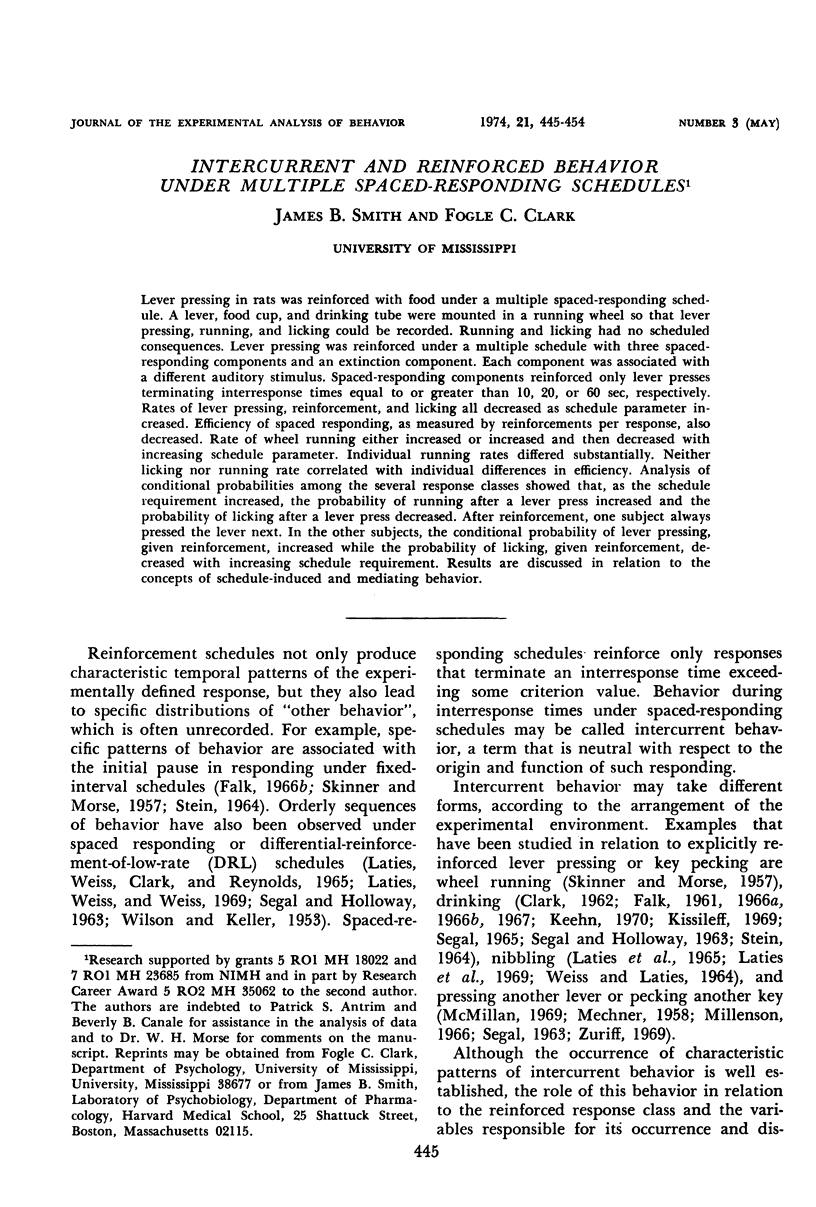
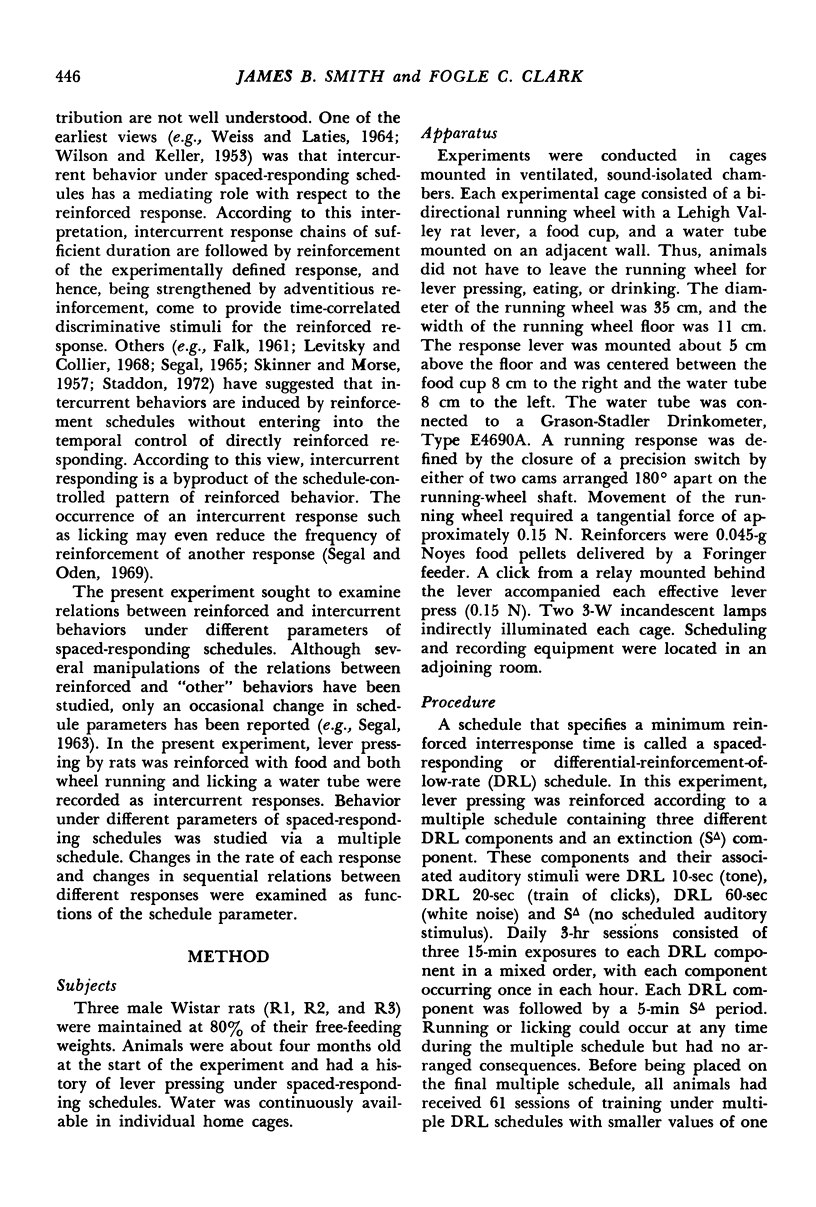
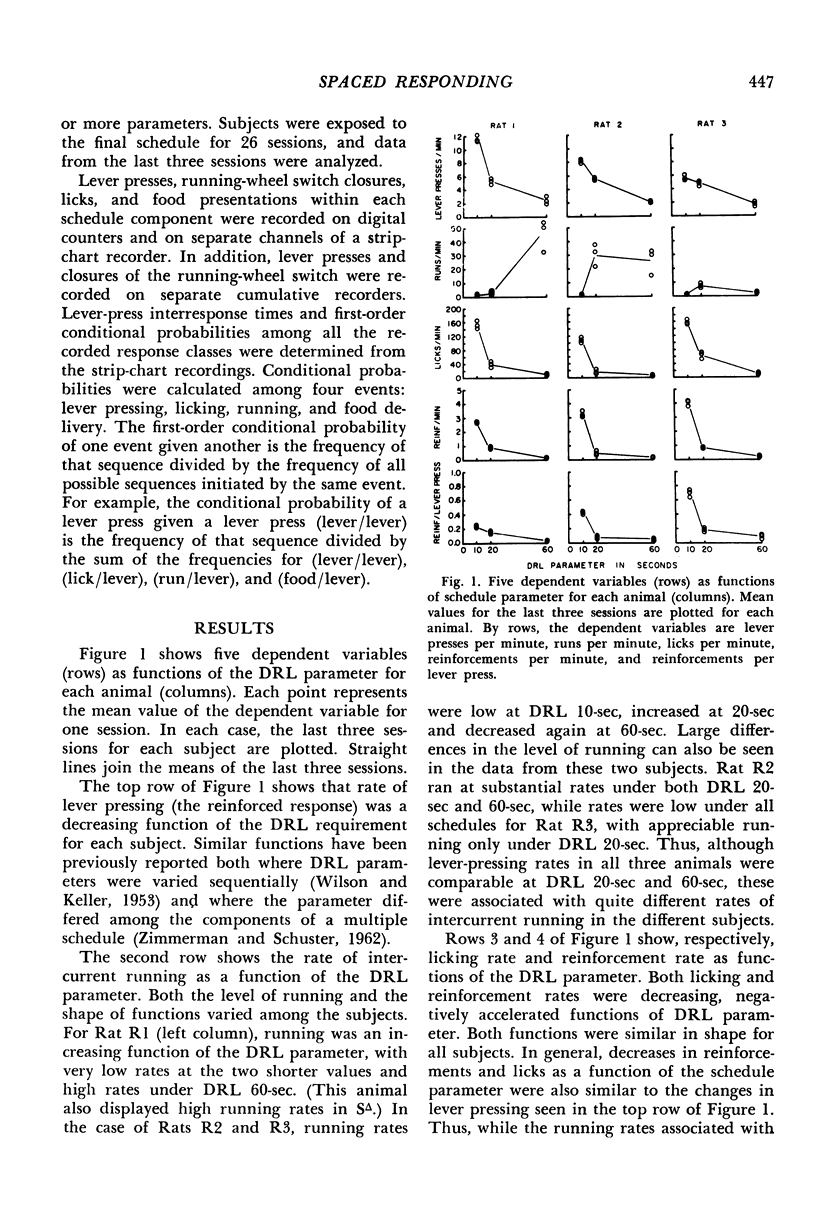
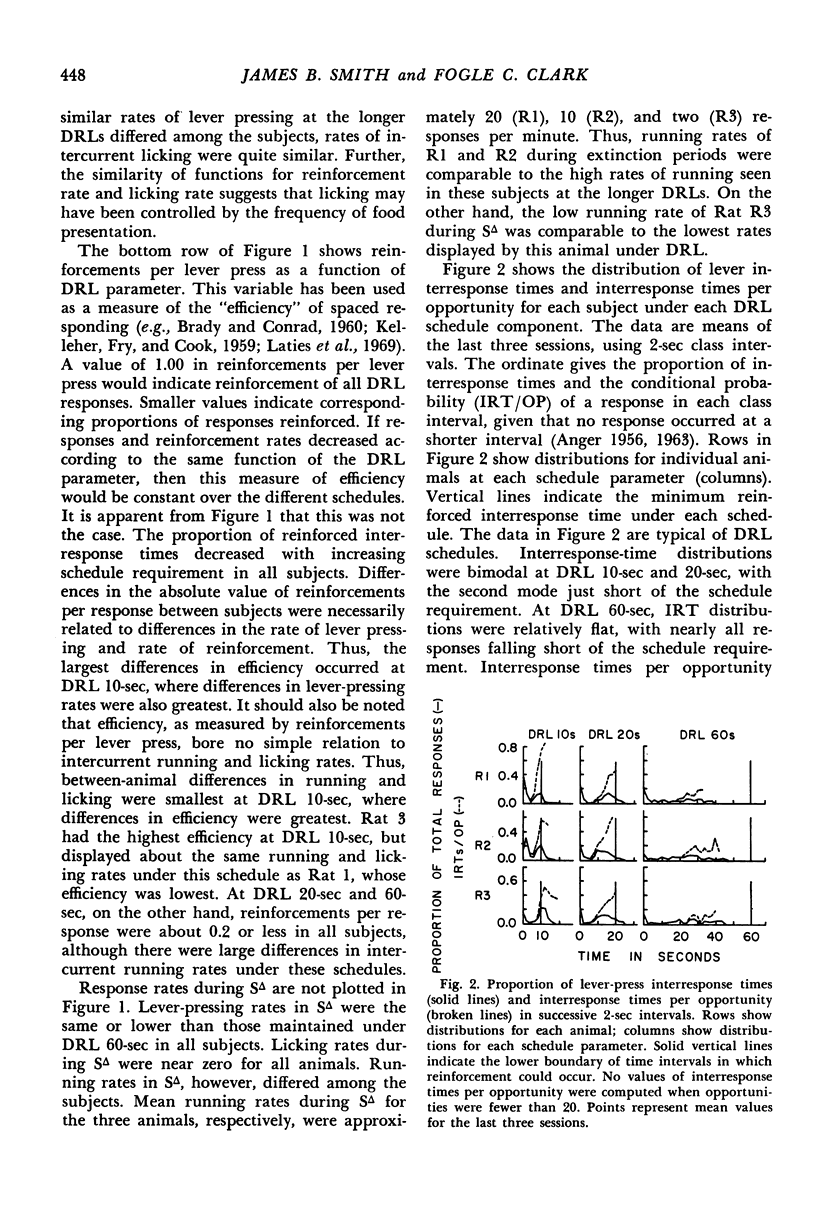
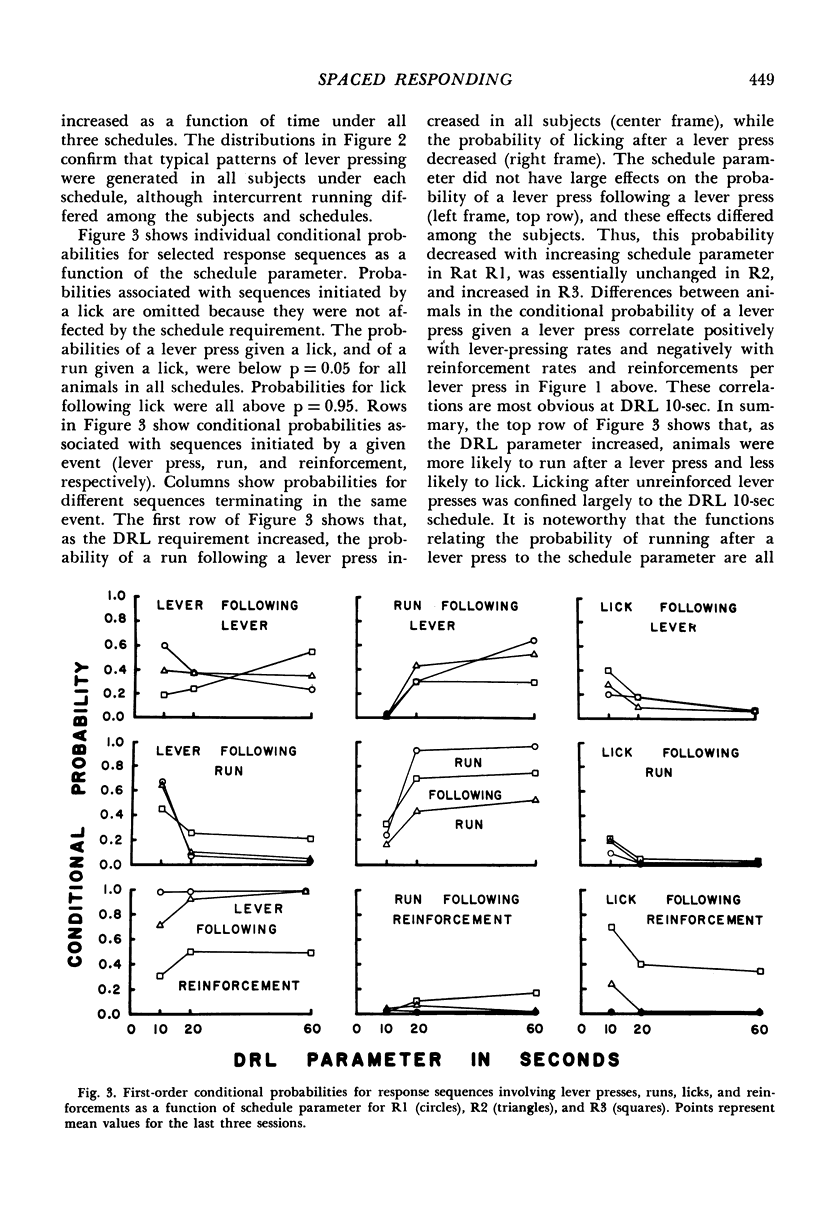
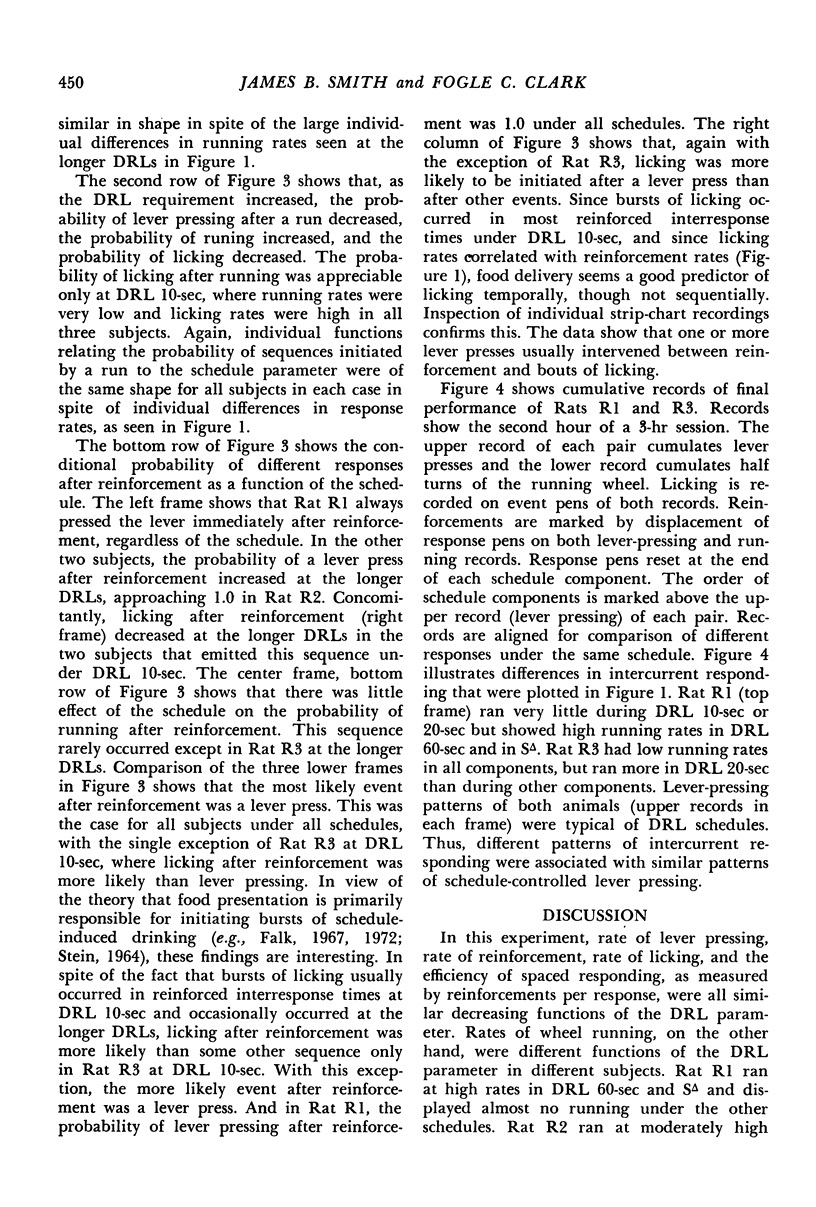
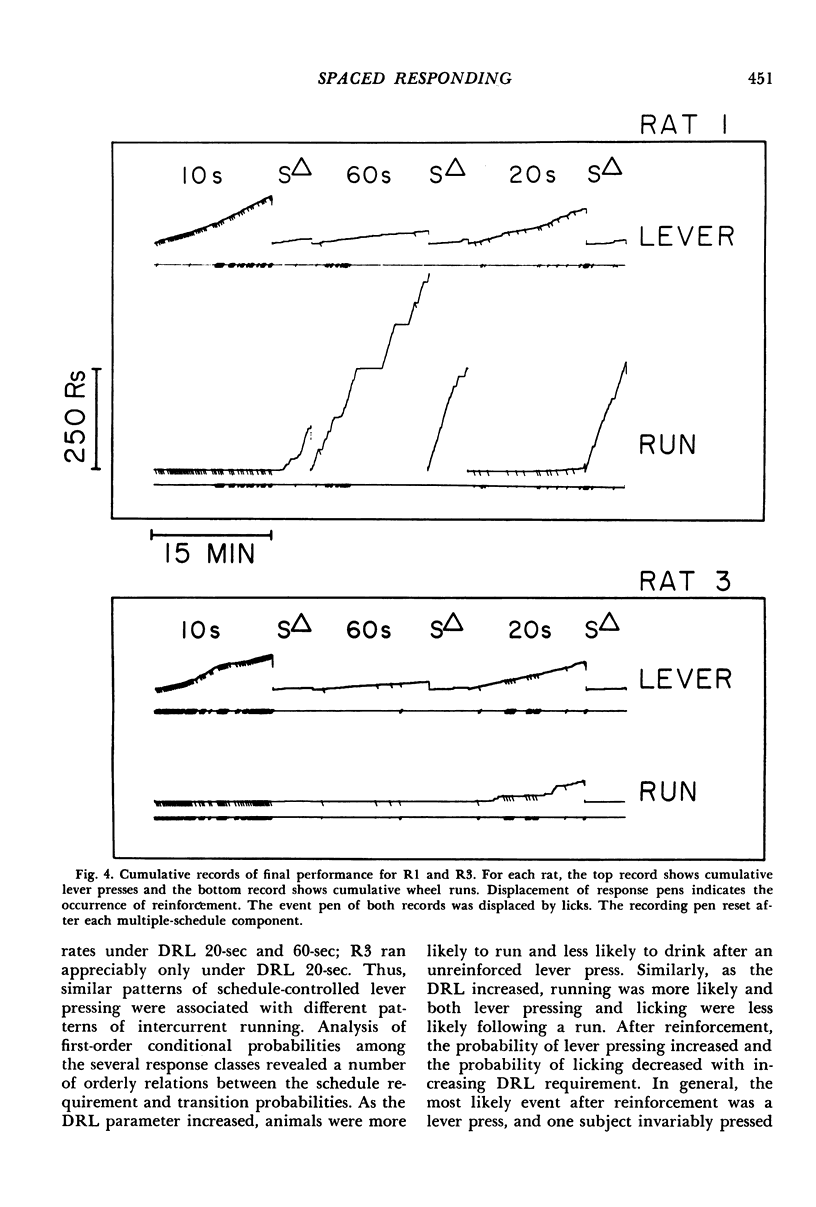

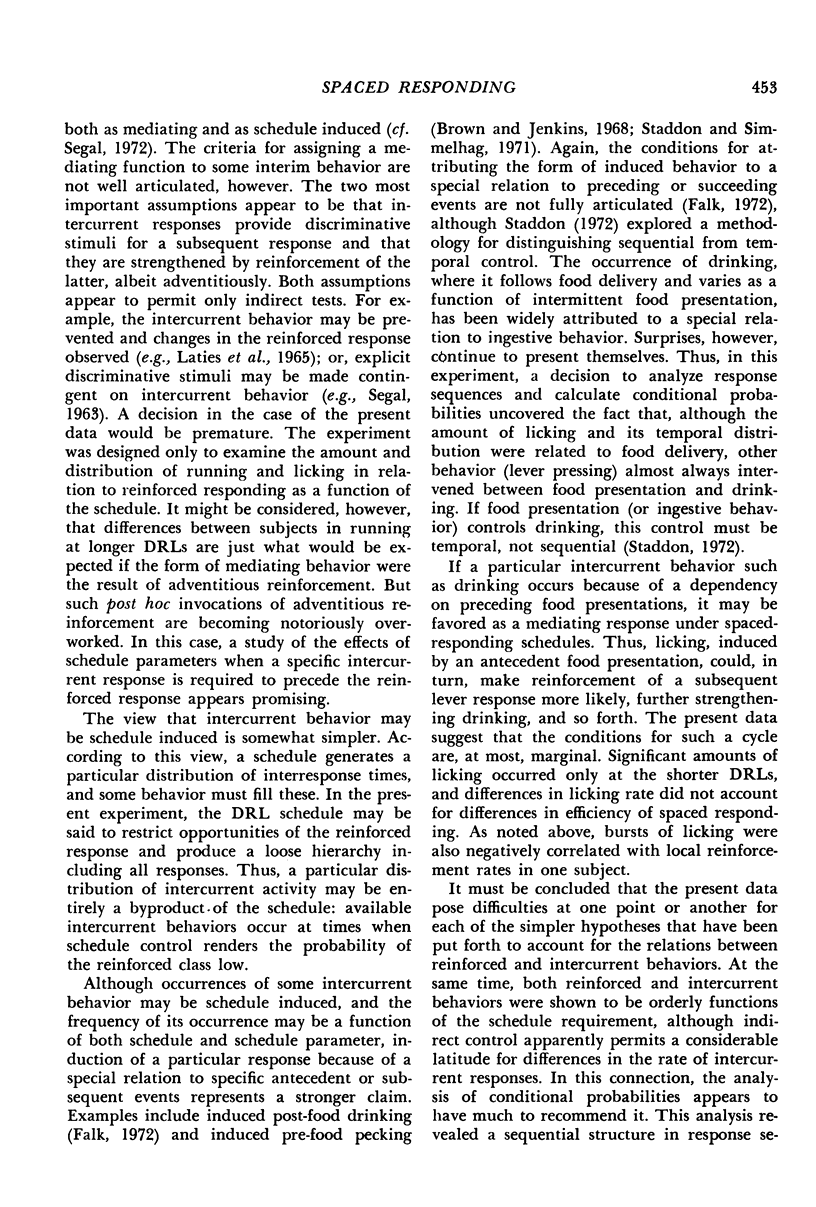
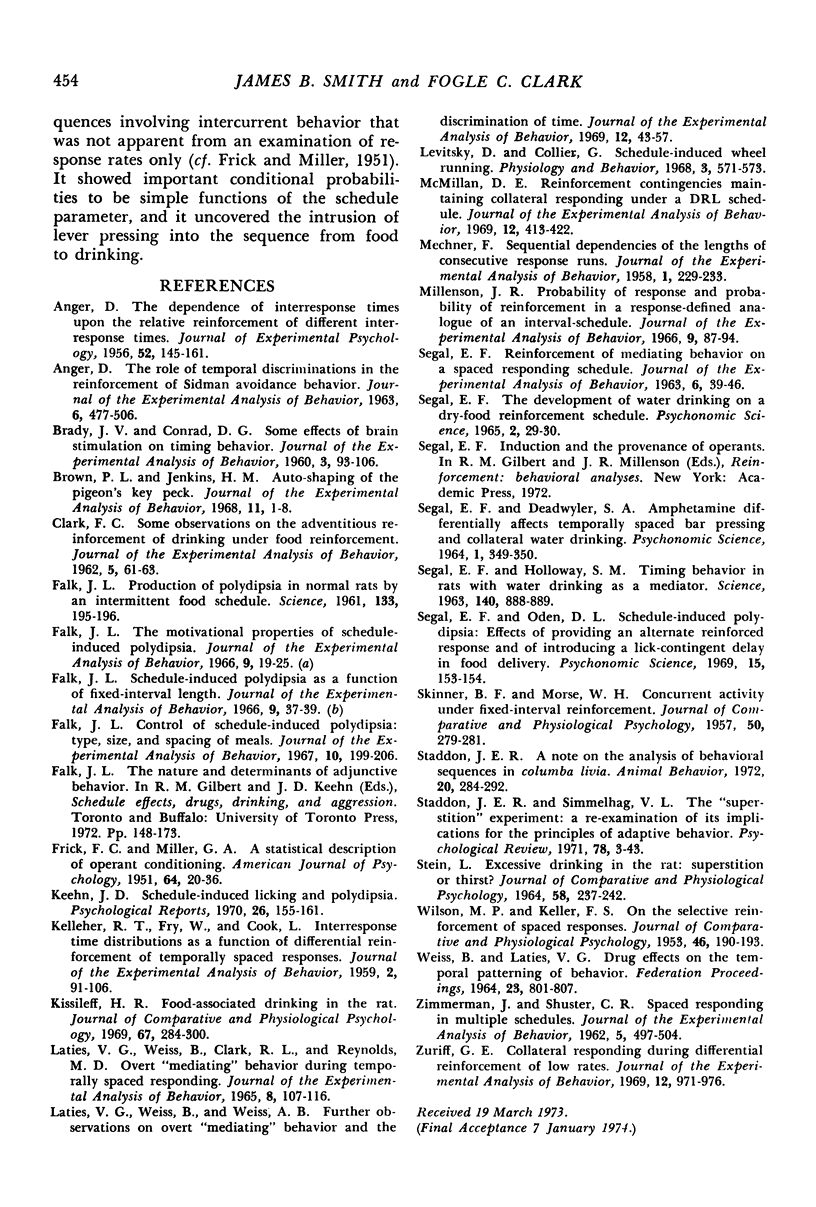
Selected References
These references are in PubMed. This may not be the complete list of references from this article.
- ANGER D. The dependence of interresponse times upon the relative reinforcement of different interresponse times. J Exp Psychol. 1956 Sep;52(3):145–161. doi: 10.1037/h0041255. [DOI] [PubMed] [Google Scholar]
- ANGER D. The role of temporal discriminations in the reinforcement of Sidman avoidance behavior. J Exp Anal Behav. 1963 Jul;6(3):477–506. doi: 10.1901/jeab.1963.6-s477. [DOI] [PMC free article] [PubMed] [Google Scholar]
- BRADY J. V., CONRAD D. G. Some effects of brain stimulation on timing behavior. J Exp Anal Behav. 1960 Apr;3:93–106. doi: 10.1901/jeab.1960.3-93. [DOI] [PMC free article] [PubMed] [Google Scholar]
- Brown P. L., Jenkins H. M. Auto-shaping of the pigeon's key-peck. J Exp Anal Behav. 1968 Jan;11(1):1–8. doi: 10.1901/jeab.1968.11-1. [DOI] [PMC free article] [PubMed] [Google Scholar]
- CLARK F. C. Some observations on the adventitious reinforcement of drinking under food reinforcement. J Exp Anal Behav. 1962 Jan;5:61–63. doi: 10.1901/jeab.1962.5-61. [DOI] [PMC free article] [PubMed] [Google Scholar]
- FALK J. L. Production of polydipsia in normal rats by an intermittent food schedule. Science. 1961 Jan 20;133(3447):195–196. doi: 10.1126/science.133.3447.195. [DOI] [PubMed] [Google Scholar]
- FRICK F. C., MILLER G. A. A statistical description of operant conditioning. Am J Psychol. 1951 Jan;64(1):20–36. [PubMed] [Google Scholar]
- Falk J. L. Control of schedule-induced polydipsia: type, size, and spacing of meals. J Exp Anal Behav. 1967 Mar;10(2):199–206. doi: 10.1901/jeab.1967.10-199. [DOI] [PMC free article] [PubMed] [Google Scholar]
- Falk J. L. Schedule-induced polydipsia as a function of fixed interval length. J Exp Anal Behav. 1966 Jan;9(1):37–39. doi: 10.1901/jeab.1966.9-37. [DOI] [PMC free article] [PubMed] [Google Scholar]
- KELLEHER R. T., FRY W., COOK L. Inter-response time distribution as a function of differential reinforcement of temporally spaced responses. J Exp Anal Behav. 1959 Apr;2:91–106. doi: 10.1901/jeab.1959.2-91. [DOI] [PMC free article] [PubMed] [Google Scholar]
- Keehn J. D. Schedule-induced licking and polydipsia. Psychol Rep. 1970 Feb;26(1):155–161. doi: 10.2466/pr0.1970.26.1.155. [DOI] [PubMed] [Google Scholar]
- Kissileff H. R. Food-associated drinking in the rat. J Comp Physiol Psychol. 1969 Mar;67(3):284–300. doi: 10.1037/h0026773. [DOI] [PubMed] [Google Scholar]
- LATIES V. G., WEISS B., CLARK R. L., REYNOLDS M. D. OVERT "MEDIATING" BEHAVIOR DURING TEMPORALLY SPACED RESPONDING. J Exp Anal Behav. 1965 Mar;8:107–116. doi: 10.1901/jeab.1965.8-107. [DOI] [PMC free article] [PubMed] [Google Scholar]
- Laties V. G., Weiss B., Weiss A. B. Further observations on overt "mediating" behavior and the discrimination of time. J Exp Anal Behav. 1969 Jan;12(1):43–57. doi: 10.1901/jeab.1969.12-43. [DOI] [PMC free article] [PubMed] [Google Scholar]
- McMillan D. E. Reinforcement contingencies maintaining collateral responding under a DRL schedule. J Exp Anal Behav. 1969 May;12(3):413–422. doi: 10.1901/jeab.1969.12-413. [DOI] [PMC free article] [PubMed] [Google Scholar]
- Mechner F. Sequential dependencies of the lengths of consecutive response runs. J Exp Anal Behav. 1958 Aug;1(3):229–233. doi: 10.1901/jeab.1958.1-229. [DOI] [PMC free article] [PubMed] [Google Scholar]
- Millenson J. R. Probability of response and probability of reinforcement in a response-defined analogue of an interval schedule. J Exp Anal Behav. 1966 Mar;9(2):87–94. doi: 10.1901/jeab.1966.9-87. [DOI] [PMC free article] [PubMed] [Google Scholar]
- SEGAL-RECHTSCHAFFEN E. Reinforcement of mediating behavior on a spaced-responding schedule. J Exp Anal Behav. 1963 Jan;6:39–46. doi: 10.1901/jeab.1963.6-39. [DOI] [PMC free article] [PubMed] [Google Scholar]
- SEGAL E. F., HOLLOWAY S. M. Timing behavior in rats with water drinking as a mediator. Science. 1963 May 24;140(3569):888–889. doi: 10.1126/science.140.3569.888. [DOI] [PubMed] [Google Scholar]
- SKINNER B. F., MORSE W. H. Concurrent activity under fixed-interval reinforcement. J Comp Physiol Psychol. 1957 Jun;50(3):279–281. doi: 10.1037/h0047021. [DOI] [PubMed] [Google Scholar]
- STEIN L. EXCESSIVE DRINKING IN THE RAT: SUPERSTITION OR THIRST? J Comp Physiol Psychol. 1964 Oct;58:237–242. [PubMed] [Google Scholar]
- WEISS B., LATIES V. G. DRUG EFFECTS ON THE TEMPORAL PATTERNING OF BEHAVIOR. Fed Proc. 1964 Jul-Aug;23:801–807. [PubMed] [Google Scholar]
- WILSON M. P., KELLER F. S. On the selective reinforcement of spaced responses. J Comp Physiol Psychol. 1953 Jun;46(3):190–193. doi: 10.1037/h0057705. [DOI] [PubMed] [Google Scholar]
- ZIMMERMAN J., SCHUSTER C. R. Spaced responding in multiple DRL schedules. J Exp Anal Behav. 1962 Oct;5:497–504. doi: 10.1901/jeab.1962.5-497. [DOI] [PMC free article] [PubMed] [Google Scholar]
- Zuriff G. E. Collateral responding during differential reinforcement of low rates. J Exp Anal Behav. 1969 Nov;12(6):971–976. doi: 10.1901/jeab.1969.12-971. [DOI] [PMC free article] [PubMed] [Google Scholar]


